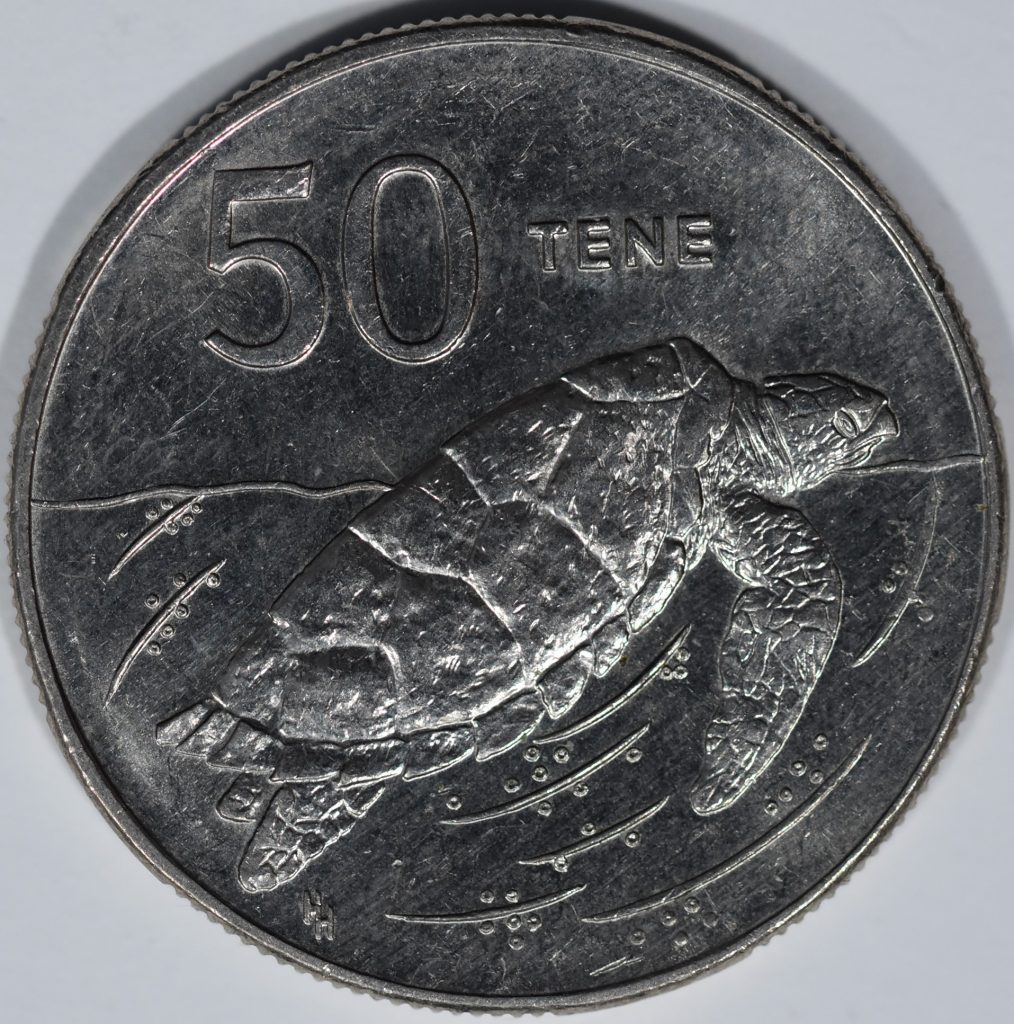In 1972, bronze 1 and 2 cents, and cupro-nickel 5, 10, 20 and 50 Cents, and 1 Dollar coins were introduced. All were the same size, weight, and composition as the corresponding New Zealand coins, however, the unique crown-sized dollar coin circulated much more readily than its New Zealand equal. Each coin depicted plants, animals, and items unique to the Cook Islands.
In 1983, production of the 1 and 2-cents coins was ceased and the two coins were later demonetised – almost 10 years before the equivalent occurred in New Zealand.
The Cook Islands has a long reputation for frequent monetary oddities. It was one of the last countries to hold on to large crown-sized coins ($1 of the 1972-83 issue) while elsewhere, coins of such size are no longer minted in large enough quantities intended for circulation.
In 1987, a smaller, lighter scallop-edged $1 coin was issued. This coin was produced to replace its bulky predecessor. With the release of its new $2 piece in that year, the Cook Islands officially became the first modern country to issue a circulating three-sided coin, along with a dodecagonal (twelve-sided) $5 piece in equal size and shape to the Australian 50-cents coin. These $1 and $2 were composed of cupro-nickel and the $5 coin was in aluminium bronze.
1988 brought the redesign of the 50-cent piece, the first coin in the country to bear a denomination name. Although widely recognised as “cents” this coin depicts “tene”, the native language equivalent to the English word cent.
In 1995 the Cook Islands dollar was withdrawn in favour of the New Zealand dollar only. Local coins remained in use and technically became denominated in New Zealand dollars, likewise for future coin issues even as they continued to be inscribed with the words “Cook Islands”.
A large, stainless steel 5 cents coin was issued in 2000 centred on the theme of the FAO and food security, depicting the Tangaroa image present on the dollar piece.
2003 saw the reintroduction of a 1-cent coin, this time composed of aluminium rather than bronze and slightly smaller and thicker than the 10-cents piece. These were issued with five different reverses, each commemorating a few of the nation’s historical themes.
With the reduction in size of New Zealand’s 10, 20 and 50-cents coins in 2006, older cent coins began to be phased out in both countries. However, $1, $2, and $5 pieces remained in use. Although a 2010 commemorative Cook Islands coin set in denominations 1-, 2-, 5-, 10-, 20-, and 50-cents and a bimetallic $1 have been minted with a similar size to some of the newer New Zealand ones, these coins are for collectors and intended to raise money for the Cook Islands government, rather than for release into circulation.
In 2015, as part of a coinage reform, new coins were minted by the Royal Australian Mint. The new coins carry similar designs to the older ones with the 10-, 20-, and 50-cents struck in nickel-plated steel, while the 1-, 2-, and 5-dollar coins are struck in brass-plated steel. The new 5 dollar coin features a traditional vaka instead of a conch. The cents are smaller than previous issues with closer size and weight to the current coins of New Zealand while the new dollars continue to have their distinctive shapes.
On 30 April 2016, all previous coins lost legal tender status.
*Taken from Wikipedia


